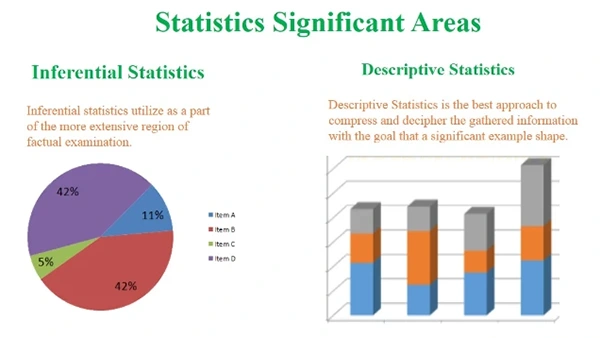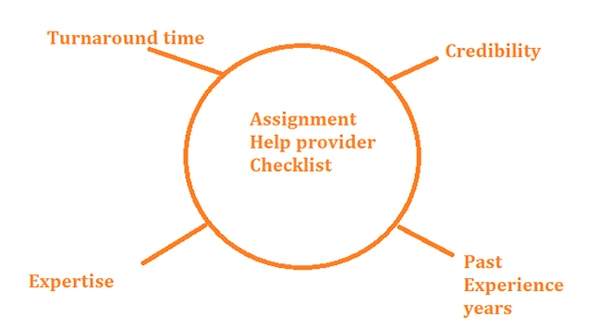Top-Quality Statistics Assignment Help for Accurate Solutions

In the world of numbers and probabilities, Mark Twain’s words resonate: ‘Facts are stubborn, but statistics are more pliable.‘ Stats are already way more intricate than Mathematics.
Picture this: you’re staring at a sea of data, drowning in uncertainty. That’s where our lifeline kicks in.
What is that? Services like Statistics assignment help from MyAssignmentHelp.com or similar academic tutoring websites.
These services are more like statistical GPS for students, guiding them through the maze of p-values and regression analysis.
No more deciphering the cryptic language of chi-squares and standard deviations alone. You just have to find the right website offering academic services like statistics or Accounting and Finance assignment help and click on the link.
Today, we will learn how to solve stats homework the experts’ way, followed by the correct path to find the best professional help.
Challenges Students Face While Crafting Statistics Assignment
Here are some of the challenges students commonly face when working on such assignments.
Conceptual Understanding
The primary challenge is developing a solid conceptual understanding of statistical concepts. It involves a range of topics, including probability, hypothesis testing, and regression analysis.
Without a clear understanding of these foundational concepts, students may struggle to solve problems and interpret results accurately.
Application of Mathematical Formulas
When processing concepts, applying mathematical formulas to solve problems is equally challenging. It could be difficult to choose the right formula for a given problem and one may make errors in calculations.
This challenge is compounded when dealing with multiple formulas in a single assignment.
Data Collection and Analysis
It often requires students to collect and analyze data. The process of gathering relevant data, organizing it, and then applying statistical methods can be time-consuming and complex.

Do You Know?:
There are majorly 2 significant areas of statistics i.e. inferential and descriptive statistics. Inferential is a study for equating/inferring the data with general conditions whereas descriptive is a way of summarizing and interpreting the collected data in a pattern form.
Students may struggle with picking appropriate data sets, cleaning data, and choosing the most suitable statistical techniques for analysis.
Software Proficiency
Statistical analysis nowadays is often performed using specialized software such as SPSS, R, or Excel. Learning to navigate and effectively use can be challenging for students.
Understanding the software interface, inputting data, and interpreting the output requires additional skills that may not be explicitly taught in traditional courses.
Interpretation of Results
Even after successful statistical analyses, interpreting the results can be difficult. Connecting statistical findings to real-world implications and drawing meaningful conclusions requires serious thinking and a deep understanding of the subject matter.
Students may also struggle to convey the significance of their results clearly and concisely.
Time Management
Stats assignments often have tight deadlines, so time management is paramount. It’s vital to allocate sufficient time for each aspect of the assignment. Be it understanding the problem by conducting the analysis or presenting the results.

Statistics:
In a survey conducted on what people feel are the benefits of better time management, it is found that 91% expressed that better time management will lead to reduced stress at work.
Poor time management can lead to rushed work and lower-quality assignments.
Lack of Practical Application
Without a clear understanding of how it is used in various fields, they may find it challenging to stay motivated and engaged in the learning process.
Connecting theoretical concepts to real-world examples can enhance comprehension and make assignments more meaningful.
Tips To Craft Perfect Statistics Assignments
Here are a few hacks that experts use to craft perfect assignments –
Grasp Fundamental Concepts
Take the time to thoroughly understand concepts like probability, hypothesis testing, and regression analysis.
Ensure you can apply these concepts to various scenarios, as a deep understanding will make the rest of the assignment much more manageable.
Plan Your Approach
Before diving into calculations, take a moment to plan your approach. Understand the requirements of the assignment, break it down into smaller tasks, and create a step-by-step plan.
Organize your thoughts and ensure that you don’t miss any required steps along the way.
Choose the Right Formula
Review your class notes, textbooks, or any provided materials to identify the appropriate formula. Develop a habit of double-checking your choices, as using the wrong formula can lead to inaccurate results.
Master Statistical Software
Statistical software such as SPSS, R, or Excel can streamline the analysis process and enhance the accuracy of your results. View online tutorials or resources provided by your educational institution to familiarize yourself with the software’s functionalities.
Embrace Data Collection and Analysis
Develop skills in choosing relevant data sets, cleaning and organizing data, and choosing appropriate statistical techniques.
Fast Fact:
A study reveals that each day around 2.5 quintillion bytes worth of data is generated.
Practice interpreting the results to draw meaningful conclusions that align with the assignment’s objectives.
Enhance Interpretation Skills
Understanding statistical results requires improving interpretation skills. Connect statistical findings to real-world implications, and consider the broader context of your analysis.
This skill is necessary for conveying the significance of your results clearly and concisely.
Seek Practical Application
To enhance your understanding and motivation, seek practical applications of statistical concepts. Explore how it is used in different fields and industries. Understanding the real-world implications of your work can make the assignment more engaging and meaningful.
Utilize Available Resources
Take advantage of available resources. Consult your textbooks, class notes, and online resources to supplement your understanding. If you encounter challenges, don’t hesitate to seek help from your instructor, classmates, or online forums.
Collaborative learning can provide valuable insights and perspectives.
How To Find The Top-Quality Statistics Assignment Help for Accurate Solutions?

Now, let’s explore the vital steps to ensure you choose a reliable and competent source for assistance.
Research Online Platforms
There are numerous websites, tutoring services, and educational platforms that cater to students seeking assistance in various subjects, including statistics.
Do your research and look for reputable platforms with positive reviews and testimonials from other students.
Check Credentials and Expertise
Evaluate the credentials and expertise of the individuals or teams providing data science assignment help. Ensure they have a background in this field, mathematics, or a related field.
Look for information about their education, professional experience, and any certifications that validate their expertise in the subject matter.
Review Sample Work
Reviewing samples available on the website itself can give you insights into the quality of their solutions, the depth of analysis, and their ability to communicate complex concepts.
If possible, request sample solutions relevant to your assignment requirements.
Verify Reviews and Testimonials
Do not forget to go through reviews and testimonials from other students who have used the service. Platforms like Trustpilot, Google Reviews, or testimonials on the service’s website can provide valuable feedback.
Pay attention to both positive and negative reviews to gauge the overall satisfaction of previous clients.
Ensure Plagiarism-Free Solutions
Plagiarism is a serious academic offense, and it’s vital to ensure that the help service provides original solutions. Ask about their approach to plagiarism detection and prevention.
Reputable services use plagiarism-checking tools and ensure the delivery of unique and authentic solutions.
Assess Communication and Support
Assess the responsiveness of the service’s customer support team with effective communication. A reliable service should be accessible through various communication channels, such as live chat, email, or phone.
Prompt and clear communication ensures that you can convey your assignment requirements and receive timely updates.
Check for Confidentiality and Privacy Policies
Verify that the chosen service has robust confidentiality and privacy policies in place. Your personal information and the details of your assignment should be handled securely and not shared with third parties.
Evaluate Pricing Structure
When affordability is influential, be wary of services that offer unrealistically low prices, as this may indicate a compromise in quality.
Look for transparent pricing models that outline the cost based on the complexity of the assignment, deadlines, and additional features.
Inquire About Revisions and Refunds
Clarify the service’s policies regarding revisions and refunds. A reputable developer should be willing to make revisions if needed, ensuring that the final solution meets your requirements.
Also, inquire about their refund policy in case you are dissatisfied with the quality of the provided solutions.
Look for Additional Learning Resources
Consider services that offer additional learning resources beyond providing solutions. If it’s explanatory notes, video tutorials, or interactive sessions, these resources can help you understand statistical concepts and improve your overall academic performance.
Test Customer Support Responsiveness
Before committing to one, test the responsiveness of their customer support. Send inquiries or concerns and assess how quickly and effectively they address your queries.
A responsive and helpful customer support team is indicative of a service that values its clients.
Finding top-quality statistics assignment help is decisive for obtaining accurate solutions and enhancing your understanding of statistical concepts.
Taking the time to choose a reliable service can contribute to your academic success and confidence in tackling future statistical challenges.








